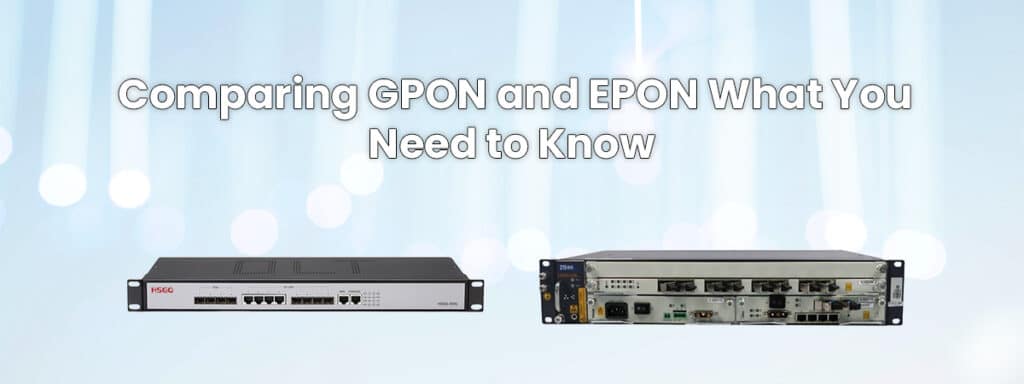Introduction
The GPON (Gigabit-capable Passive Optical Network) and EPON (Ethernet Passive Optical Network) are two of the most commonly used technologies for providing high-speed, fiber-based internet access to customers. While both technologies are based on the same basic principles of packet-switched networks, there are some key differences between GPON and EPON that should be taken into consideration when choosing which technology is best for your needs. In this blog post, we will discuss the differences between GPON and EPON so that you can make an informed decision.
What is GPON?
GPON stands for “Gigabit-capable Passive Optical Network.” It is a technology that uses a point-to-multipoint architecture with a central optical line terminal (OLT) connected to multiple optical network units (ONUs). A GPON network can provide up to 2.5 Gbps of bandwidth, which is considerably faster than the 1 Gbps that is offered by most cable and DSL services. GPON networks are also capable of providing VoIP services, as well as IPTV and other multimedia services.
What is EPON?
EPON stands for “Ethernet Passive Optical Network.” It is a technology that is similar to GPON, but uses a point-to-point architecture with a single optical line terminal (OLT) connected to one or more optical network units (ONUs). EPON networks offer up to 1 Gbps of bandwidth, which is still considerably faster than the speeds offered by most cable and DSL services. EPON networks are also capable of providing VoIP services, as well as IPTV and other multimedia services.
Differences between GPON and EPON
The main difference between GPON and EPON is the speed of the connection. GPON networks offer up to 2.5 Gbps of bandwidth, while EPON networks offer up to 1 Gbps of bandwidth. Additionally, GPON networks use a point-to-multipoint architecture, while EPON networks use a point-to-point architecture.
Another key difference between GPON and EPON is the number of ONUs that can be connected to an OLT. GPON networks can support up to 32 ONUs per OLT, while EPON networks can only support up to 8 ONUs per OLT. This means that GPON networks can support more users than EPON networks, making them an attractive option for larger organizations or businesses.
Finally, GPON networks typically have better latency and jitter performance than EPON networks, making them the preferred option for applications that require low latency and jitter, such as VoIP and video streaming.
Conclusion
GPON and EPON are two of the most commonly used technologies for providing high-speed, fiber-based internet access to customers. While both technologies are based on the same basic principles of packet-switched networks, there are some key differences between GPON and EPON that should be taken into consideration when choosing which technology is best for your needs. GPON networks offer up to 2.5 Gbps of bandwidth and use a point-to-multipoint architecture, while EPON networks offer up to 1 Gbps of bandwidth and use a point-to-point architecture. GPON networks also typically have better latency and jitter performance than EPON networks, making them the preferred option for applications that require low latency and jitter. Ultimately, the decision between GPON and EPON should be based on the specific requirements and needs of the organization or business.

